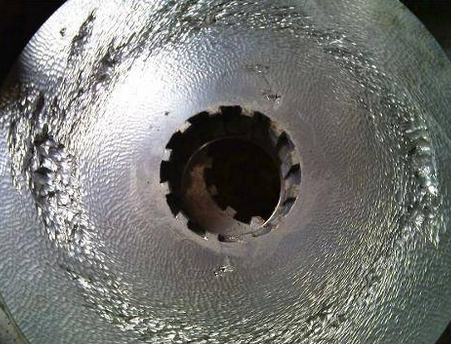Analysis of the causes of heating in centrifugal pumps
The reasons for the heating of centrifugal pumps may involve multiple aspects. The following is a detailed analysis of these reasons:
1. Improper operation
The outlet valve is not opened in time: After the centrifugal pump is started, if the outlet valve is not opened for a long time, the medium inside the pump body will not be able to flow out smoothly, thereby generating heat.
Pump evacuation: When the pump inlet pressure is too low or air is brought into the pump, the pump may be evacuated, causing the medium to circulate (stir) continuously without water output, thereby generating heat.
2. Equipment failure or blockage
Blockage of outlet valve or check valve: The blockage of these valves will hinder the normal flow of the medium, causing the internal pressure of the pump body to increase, thereby causing heating.
Pipeline blockage: Including blockage of the pump body return oil pipe, pump inlet filter, impeller and other parts, all will affect the flow of the medium and increase the internal temperature of the pump body.
Bearing failure: Bearing damage, increased friction, lack of oil in the lubrication system or poor oil quality will cause the bearing to heat up, which will then be transmitted to the pump body.
Friction between the impeller and the pump casing: The friction between the impeller and the pump casing will also increase the heat of the pump body.
3. Design or installation problems
Rotor imbalance: Rotor imbalance can cause increased vibration of the pump body, which in turn causes heating.
Bent pump shaft or two shafts are not concentric: This will affect the balance of the impeller and cause additional friction heat inside the pump body.
The pump and pipeline are not completely filled and emptied: This will affect the flow state of the medium and increase the load and heat of the pump body.
4. Other factors
Overload: When the load of the pump exceeds its design capacity, it will cause the pressure and temperature inside the pump body to increase.
Cavitation: Cavitation is a common phenomenon in the operation of centrifugal pumps. It will cause cavitation and shock waves inside the pump body, which will cause heating and vibration.
Solution
For the problem of heating of centrifugal pumps, the following measures can be taken to solve it:
Open the outlet valve in time: Ensure that the outlet valve can be opened in time after the centrifugal pump is started, so that the medium can flow out smoothly.
Check and clean the blocked parts: Regularly check and clean the pump body, pipeline, filter screen and other parts to ensure that the medium flows unimpeded.
Strengthen bearing lubrication and maintenance: Regularly check the lubrication of the bearings, and replace damaged bearings and inferior lubricants in time.
Adjust the balance of the pump body and rotor: For problems such as rotor imbalance or pump shaft bending, it is necessary to adjust or replace related parts to ensure the normal operation of the pump body.
Optimize design and installation: Fully consider the operating conditions and requirements of the pump body during the design and installation process to ensure the reasonable layout and installation of components such as the pump body and pipelines.
Control load and avoid cavitation: Reasonably control the load of the pump and avoid cavitation to reduce the heat generated by the pump body.





